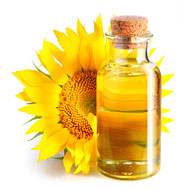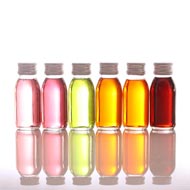- Bergamot Essential Oil
- Black Pepper Essential Oil
- Cajeput Essential Oil
- Camomile Oil
- Cedarwood Essential Oil
- Citronella Essential Oil
- Clary Sage Essential Oil
- Coriander Oil
- Lavender Essential Oil
- Rose Oil
- Eucalyptus Oil
- Fennel Essential Oil
- Frankincense Essential Oil
- Geranium Oil
- Grapefruit Oil
- Essential Oil Jasmine
- Juniper Berry Oil
- Lavandin Oil
- Lavender Oil
- Lemon Oil
- Lemongrass Oil
- Mandarin Oil
- Melissa Oil (Officinalis)
- Cypress Oil
- Aroma Essential Oil
- Aromatherapy And Essential Oils
- Avocado Oil Benefits
- Oil Healing Properties
- Essential Lemon Oil Health Benefits
- Lemongrass Essential Oil Health Benefits
- Mandarin Essential Oil Health Benefits
- Marjoram Essential Oil Health Benefits
- Massage Body Oils Health Benefits
- Melissa Essential Oil Benefits
- Essential Myrrh Oil Health Benefits
- Natural Essential Oil Health Benefits And Uses
- Neroli Essential Oil
- Niaouli Essential Oil
- Essential Oils And Uses
- Organic Essential Oils
- Patchouli Essential Oil
- Peppermint Essential Oil
- Petitgrain Essential Oil
- Rosemary Essential Oil
- Sandalwood Essential Oil
- Sandalwood Massage Oil
- Sunflower (Black) Seed Oil
- Tangerine Oil
- Tea Tree Oil Uses
- Thyme Essential Oil
- Vetiver Oil
- All Natural Oil
- Olive Oil Products
- Almond Oil For Hair,Massage,Cooking And Aromatherapy
- Best Olive Oil In The World - Reviews
- Avocado Oil
- Aromatherapy Essential Oils And Blends
- Essential Oils Aromatherapy
- Catnip Essential Oil
- Spikenard Essential Oil
- Chocolate Essential Oil
- Carrot Seed Essential Oil
- Tuberose Essential oil
- Manuka Essential Oil
- Yarrow Essential Oil
- Galbanum Essential Oil
- Linden Blossom Essential Oil
- Oregano Essential Oil
- Ravensara Essential oil
- Ylang Ylang Essential Oil
- Wintergreen Oil
- Clove Oil
- Spearmint Essential Oil
- Pine Essential Oil
- Lime Essential Oil
- Lemon Verbena Essential Oil
- How Different Are Mint Oil And Peppermint Oil?
- Vegetable Oils
Helichrysum Essential Oil
Helichrysum angustifloium is otherwise known as the curry plant and it is a native of the Mediterranean region. It is a very short plant and grows to only about a foot or so in height.
It has a woody stem and short light green to almost white leaves. They form pale yellow flowers in late summer.
It is from their flowers that the essential oil is extracted. They are very small, but bloom as an inflorescence. These flowers retain their color and shape even after they are cut and are therefore they are often used in floral decorations.
Physical Properties
Helichrysum oil is a watery liquid that can be anywhere from a pale yellow color to red. It has a straw-like smell and has undertones of honey and tea. While its origin is uncertain, it is known that it has been used throughout Europe as a medicinal herb since medieval times.
How is Helichrysum oil made?
Most essential oils, including Helichrysum, are manufactured using the steam distillation method. During the steam distillation process, steam is passed through the flowers to break down the cells and carry the aromatic material along with the steam. The steam now contains the essential oils and once it cools, the water is separated from the oil using fractional distillation.
Chemical Composition
There are a number of chemicals that make up Helichrysum oil and they are listed below:
- Camphene
- Myrcene
- Linaloo
- B-pinene
- Geraniol
- Limonene
- 1,8-cineole
- Eugenol
- Lnerol
- Terpinen-4-ol
- Neryl acetate
- Italidone
- A-pinene
- B-diketones
Therapeutic Applications
Helichrysum oil has a number of benefits and is used for diverse purposes. It is considered a good analgesic and anti-inflammatory and anti-allergic agent. It also has anti-bacterial and anti-viral properties. While there is a lot of anecdotal evidence for the uses of Helichrysum oil,there is also a lot of scientific proof for some of its properties.
The oil is good for removing acne and scars;it also helps clear bruises by encouraging the tissue to absorb the blood back, helping the wound heal quickly.
There is also evidence to show that topical application of the oil can help heal broken bones, with some doctors describing that the healing process is cut short by up to half the time it takes normally.
It is also good for treating high blood pressure and heart palpitations.
Apart from these physical uses, Helichrysum oil is also very useful for those suffering from emotional and psychological troubles. The aroma is considered to be very good at healing unresolved emotions. It puts the person in touch with their feelings and gives them a feeling of profound peace.
This is the reason why this oil is used very frequently in aromatherapy, and has also been used by native medicine men.
Precautions
Helichrysum Oil is nontoxic, and generally there are no precautions that need to be taken. It is however recommended that it not be given to children less than 12 years of age. The recommendation is allegedly not because of any physical harm, but because of its emotional effects on the person.
What does Helichrysum oil blend well with?
Helichrysum blends well with other essential oils such as
- Lavender
- Chamomile
- Rosewood
- Sage
- Bergamot
- Rose
- Vetiver
- Oakmoss
- Neroli
- Mimosa
- Geranium
- Cypress
There is no specific dosage that needs to be adhered to and different concentrations are used as a blend with different oils to achieve different purposes.
As an essential oil, Helichrysum is usually used only for topical application. Traditionally, it has been used only to heal wounds and to remove scars, although now it is being investigated for its anti-aging properties, because it seems to have natural ex-foliating properties.



